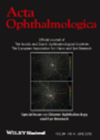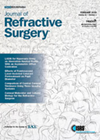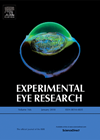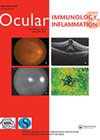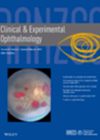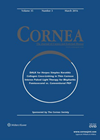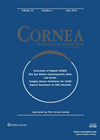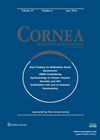
Journal Reviews archive for 2016
Myopia-protective against diabetic retinopathy
This meta-analysis evaluates the current evidence of the relationship between myopia and diabetic retinopathy (DR) risk. A systematic search was performed up to April 2015. Three models were used to assess the association between myopia and risk of DR: axial...
Retinal structural features of CMV retinitis
Confocal adaptive optics (AO) technology has enabled cellular level retinal imaging, including imaging of photoreceptors and blood flow. Adaptive optics scanning laser ophthalmoscopy (AOSLO) is a technology that provides high resolution and high contrast retinal images by correcting ocular aberrations....
The inflammatory side-effect of Brimonidine
Brimonidine is a well established selective alpha-2 adreno-receptor agonist, used to lower intraocular pressure. This case series reports on 19 eyes affected by brimonidine induced uveitis. Mean age of the patients was 74 years and mean duration of brimonidine use...
Corneal molecular and cellular biology for refractive surgeon
This is an interesting literature review that looks into the recent advances concerning the corneal molecular and cellular processes that are involved in the wound healing response after excimer laser surface ablation and LASIK surgery. It talks about the complex...
MicroRNAs in cataract
In an ageing population cataract formation is one of the leading causes of blindness. Cataracts are caused by a failure to clear accumulating aggregated proteins in the lens. MicroRNAs are small non-coding transcripts which bind to specific mRNAs acting at...
Bandage contact lens cultures after corneal collagen cross-linking
Corneal collagen cross-linking (CCL) is a treatment modality that has been shown to stop the progression of keratoconus. There have also been reports that CCL acts as an antimicrobiologic agent in treating resistant microbial keratitis. This study aimed to investigate...
Conventional vs. accelerated cross-linking
The Dresden protocol of 3mW/cm2 irradiance for 30 minutes has been extensively studied and has shown advantageous clinical and topographical results. However, this protocol is time-consuming and therefore accelerated CXL using higher irradiance to shorten treatment duration has emerged. The...
Endothelial cell loss using different graft injectors in DMEK
This study aimed to investigate endothelial cell loss between two injector systems in descemet membrane endothelial keratoplasty (DMEK) grafts; a glass injector – modified Jones tube and a plastic injector – closed system IOL injector, the Viscoject 2.2 system. DMEK...
Maintenance therapy for CMV endotheliitis
Cytomegalovirus (CMV) has been associated with corneal endotheliitis, leading to endothelial cell loss and corneal decompensation. CMV corneal endotheliitis recurrence can affect between 5-60% of eyes after cessation of anti-CMV therapy. Each recurrence of endotheliitis has a detrimental effect on...
Outcomes of primary and repeat DSAEKs
Retrospective analysis of results following primary and secondary descemet stripping automated endothelial keratoplasty (DSAEKs), carried out in Villa Serena-Villa Igea Private Hospitals in Italy, showed that primary and secondary DSAEK surgery result in similar visual outcomes, refractive errors and endothelial...
Risks factors for graft preparation failure in DMEK
Diabetes mellitus (DM) makes it more difficult to prepare descemet membrane epithelial keratoplasty (DMEK) grafts due to the ‘stickiness’ of Descemet’s membrane. This retrospective study examined a classification system, where donors were scored points according to their DM related risk...
Conjunctivochalasis and aqueous tear deficiency – which one causes symptoms?
This review sought to determine whether conjunctivochalasis (CCh) obliterates the fornix tear reservoir and thus mimics aqueous tear deficiency (ATD). Patients were divided into two groups, with aqueous tear deficiency (CCh +ATD) or without (CCh –ATD), based on results of...

